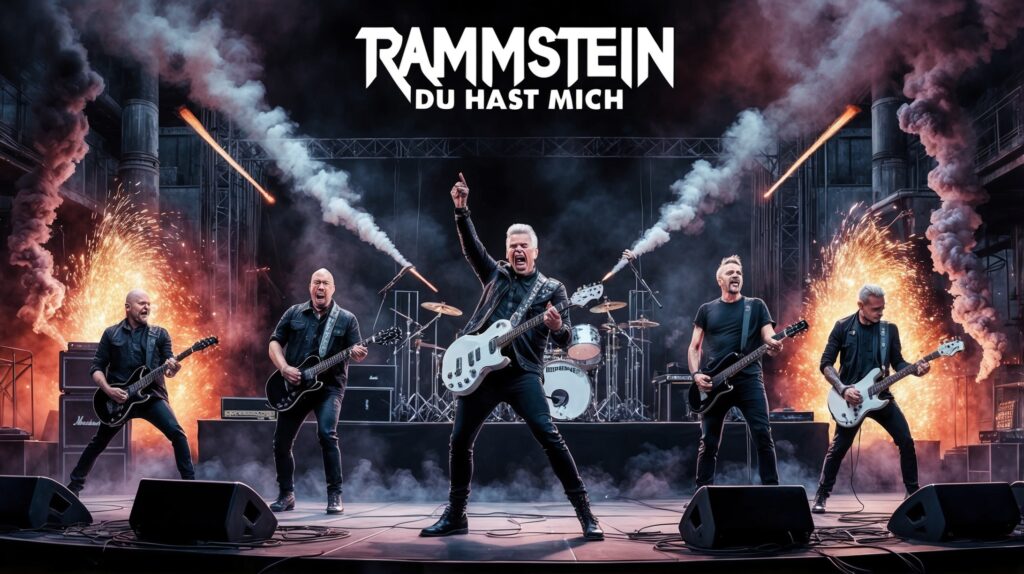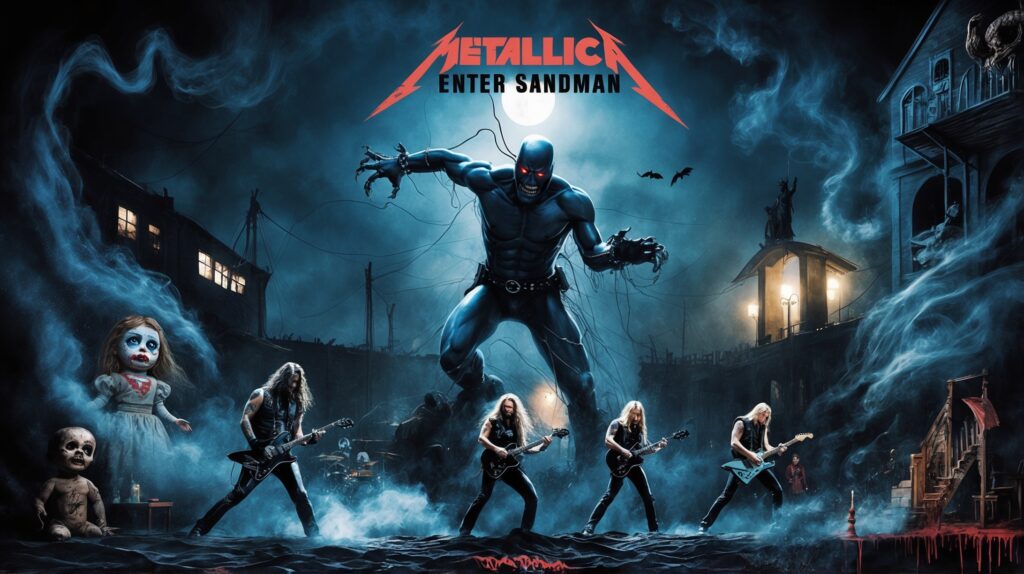Exploring the Phenomenon: The Band Behind ‘Du Hast Mich’
Rammstein, the iconic industrial metal band, rose to fame with ‘Du Hast Mich,’ cementing their place in music history with pyrotechnic performances and a powerful, unique sound.
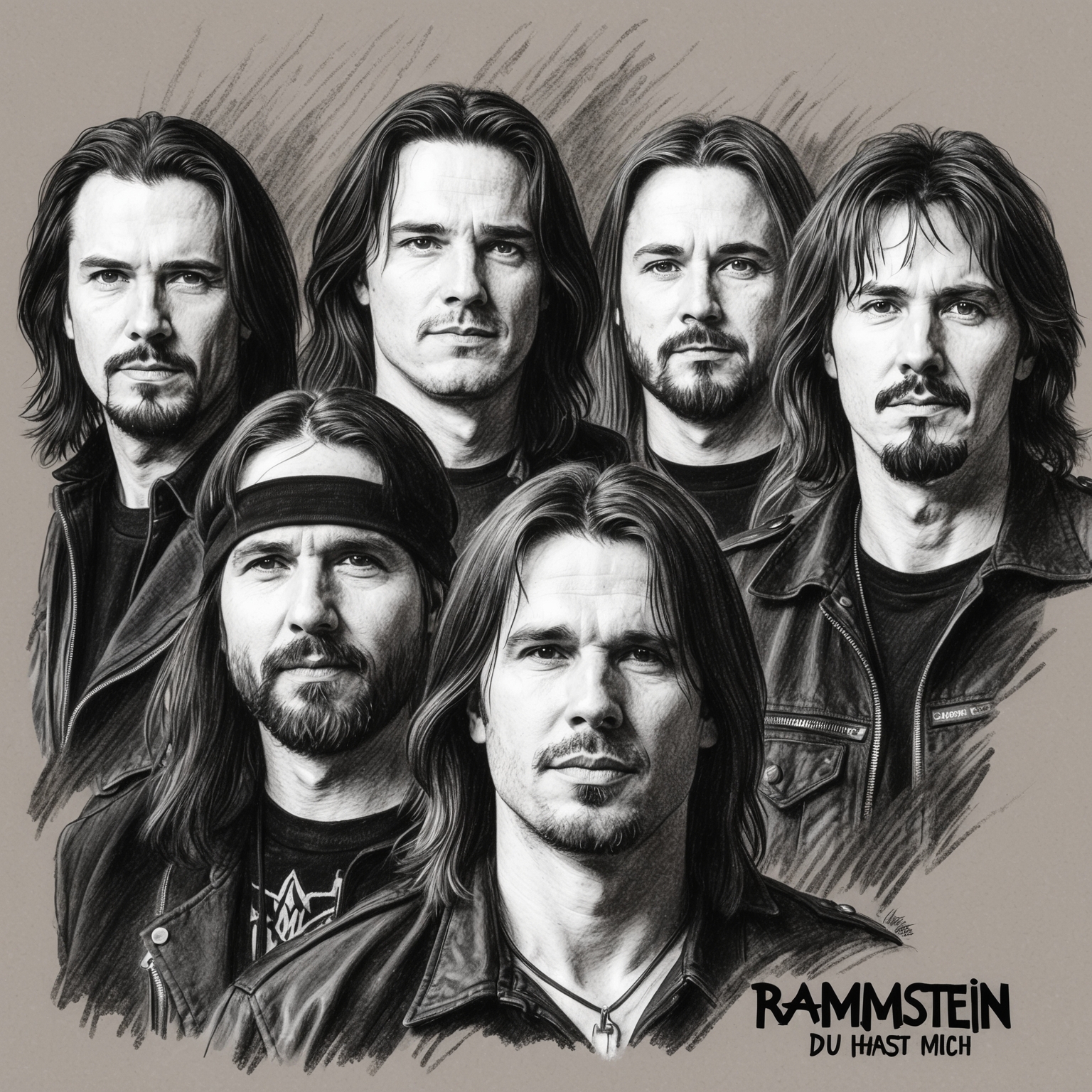
Rammstein, the German industrial metal band known for their theatrical stage presence and hard-hitting music, has been a significant force in rock and metal circles worldwide. Formed in Berlin in 1994, Rammstein quickly gained a reputation for their pyrotechnic-heavy performances and provocative lyrics. ‘Du Hast Mich,’ one of their most iconic songs, represents a crucial point in their career, solidifying their place on the global music stage.
The era around the release of ‘Du Hast Mich,’ which appeared on their sophomore album Sehnsucht in 1997, was a transformative time for the band. The mid-to-late ’90s saw a surge in interest in industrial metal, with bands like Nine Inch Nails and Ministry pioneering the genre. Rammstein, with their unique blend of driving rhythms, gothic theatrics, and German lyrics, filled a niche that resonated deeply with audiences both in Germany and abroad.
Consisting of six members—Till Lindemann, Richard Z. Kruspe, Paul Landers, Oliver Riedel, Christoph Schneider, and Christian ‘Flake’ Lorenz—the band has maintained the same lineup since their formation. This stability has allowed Rammstein to cultivate a deep musical and personal chemistry that is palpable in their creative output. Their collaborative process is a key component of their enduring success, with each member contributing to the songwriting and production processes, often working together to push the boundaries of their sound.
The Creative Forces Behind ‘Du Hast Mich’
Discover the collaborative genius of Rammstein’s ‘Du Hast Mich,’ composed by the band’s members who blend their diverse talents to create the song’s powerful and unique sound.
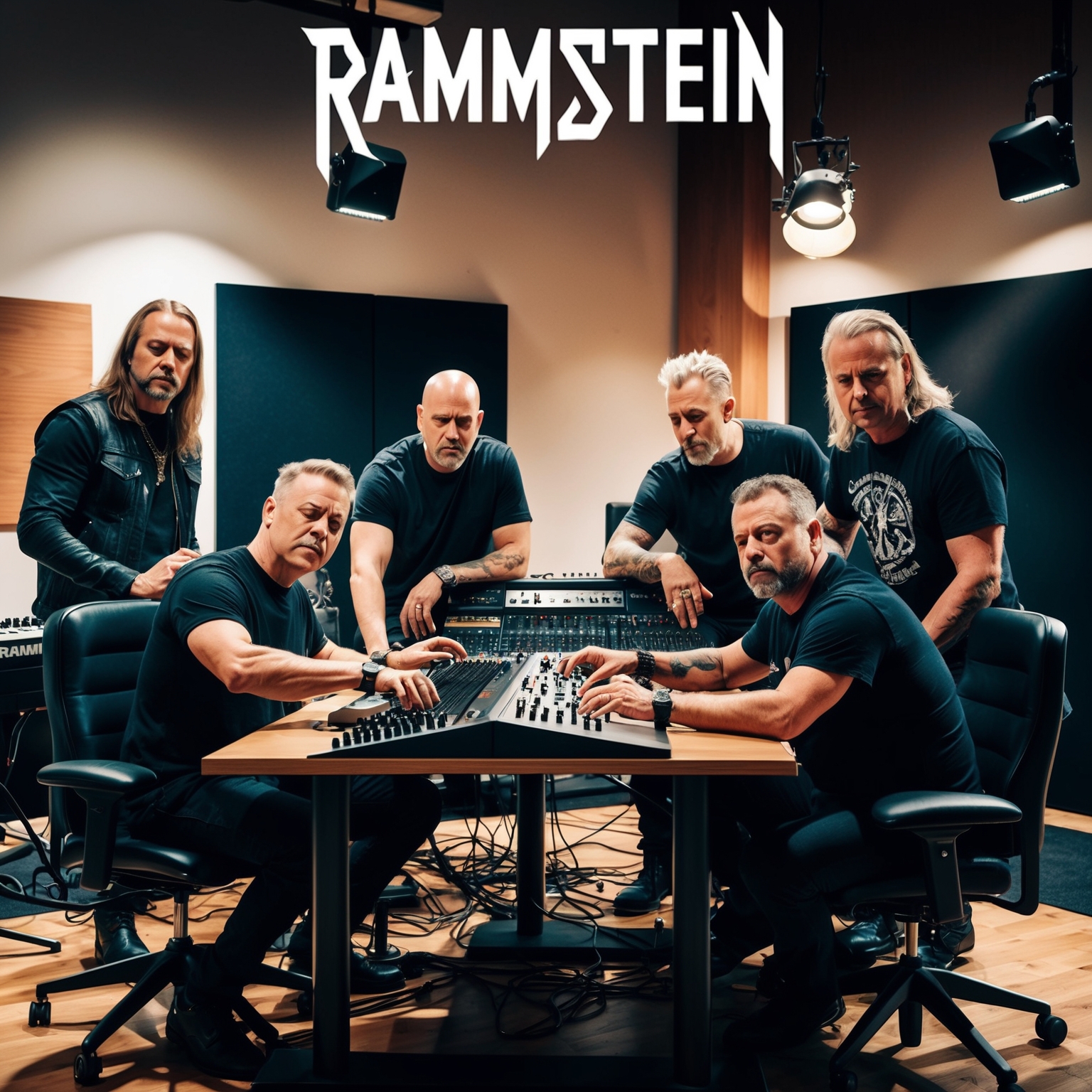
Rammstein’s ‘Du Hast Mich’ owes much of its sonic identity to the creative visions of the band’s members, who collectively compose their music. The band operates as a unit, with no single ‘composer’ in the traditional sense; instead, all members contribute to the songwriting process, blending their diverse talents and influences. The lineup consists of Till Lindemann, Richard Z. Kruspe, Paul Landers, Oliver Riedel, Christian Lorenz, and Christoph Schneider, each of whom brings distinct musical backgrounds that fuse together to form their signature sound.
Among these, Richard Z. Kruspe and Paul Landers, the guitarists of the band, are particularly influential in shaping the music of ‘Du Hast Mich.’ Kruspe’s background in classical guitar and his affinity for hard rock and metal genres play a pivotal role in the structuring of the band’s heavy, industrial sound. Meanwhile, Landers contributes his rhythm guitar expertise, which complements Kruspe’s lead style, crafting the song’s memorable riffs and melodies.
The synergy between Rammstein’s members extends to their incorporation of various influences. From industrial giants like Nine Inch Nails to the Neue Deutsche Härte movement, the band melds these elements to create a unique auditory landscape. This collective composition process ensures that ‘Du Hast Mich’ retains its aggressive yet melodic edge, showcasing Rammstein’s ability to blend intensity with cohesion.
In the case of ‘Du Hast Mich,’ the band’s collaborative effort is evident in the way the lyrics and music interweave. The rhythmic precision of the guitars and drums mirrors the terse and commanding vocal delivery of Till Lindemann. This interplay is a testament to the band’s unified creative process, where the lyrics’ themes are echoed in the raw power of the music, enhancing the song’s stark and impactful message.
Honors and Tributes to ‘Du Hast Mich’
Du Hast Mich’ by Rammstein, although not a recipient of major awards, has been celebrated through iconic film inclusions, unique covers by artists like Apocalyptica, and impactful appearances in video games, marking its cultural significance.

‘Du Hast Mich’, a powerhouse track by Rammstein, has not only made waves in the realm of industrial metal but has also earned its share of awards and widespread recognition over the years. While the song itself hasn’t amassed a collection of individual awards, its influence on the genre and its continued presence in popular culture speaks volumes. One of the notable moments in its timeline was its inclusion in the iconic 1999 film ‘The Matrix’, placing it prominently on the radar of international audiences and further cementing its status as a breakout hit.
Beyond cinematic features, ‘Du Hast Mich’ has been covered by various artists, reinterpreting its raw and aggressive energy through different musical lenses. Noteworthy is the rendition by the band Apocalyptica, known for their unique approach of playing metal with classical instruments. Their version of ‘Du Hast Mich’ adds a distinct orchestral layer that highlights the track’s intrinsic power while showcasing its adaptability across genres.
In the gaming sphere, the song has made appearances in rhythm-based video games, allowing players to virtually engage with its compelling guitar riffs and growling vocals. These appearances serve not only to introduce the track to new audiences but also to solidify its place as a beloved staple of the heavy metal genre. Through its covers, media integrations, and resilience on various platforms, ‘Du Hast Mich’ continues to receive accolades well beyond traditional awards.
The Chart Journey of ‘Du Hast Mich’
Explore the chart success of Rammstein’s ‘Du Hast Mich’, from its initial release to international acclaim, marking a breakthrough in the band’s career.

Released on July 19, 1997, ‘Du Hast Mich’ by Rammstein quickly became a significant hit for the band, signaling a milestone in their career. Despite being written almost entirely in German, the song captivated international audiences with its powerful industrial metal sound, and it played a key role in introducing Rammstein to a global platform. Initially, the song experienced moderate success in Germany, where it reached the 5th position on the German Singles Chart, marking a strong entry for the band in their home country.
Comparatively, ‘Du Hast Mich’ faced stiff competition from mainstream pop acts dominating the charts in the late ’90s. However, its unique appeal and aggressive style allowed it to cut through the saturated market, gradually climbing up various international charts. In the United States, topping the Billboard Mainstream Rock chart, it was a remarkable achievement for a non-English song at the time. This propelled Rammstein to gain notoriety outside of Europe, distinguishing them as one of the most successful German bands in the U.S.
The release of ‘Du Hast Mich’, more than just commercial success, represented a breakout moment for Rammstein, consolidating their reputation as forerunners of the Neue Deutsche Härte genre. While they had previous hits in Germany, the widespread recognition of this single was pivotal in shaping their trajectory, paving the way for later successes like ‘Mutter’ and ‘Mein Teil’. Chart performances alone may not encapsulate the full impact of ‘Du Hast Mich’, but its consistent presence in playlists and its longevity in live performances affirm its enduring legacy and cultural imprint.
Visual Storytelling: The Music Video Journey of ‘Du Hast’
Rammstein’s ‘Du Hast’ music video amplifies the song’s intensity through symbolic visuals and dramatic storytelling, contributing to its global success.

When it comes to Rammstein’s music videos, the visual representation of their enigmatic and often intense songs plays a crucial role in enhancing the listener’s experience. The music video for Du Hast is no exception. Directed by renowned music video director Philipp Stölzl, the video captures the raw energy and provocative nature of the song. Set against an industrial backdrop, the video features a series of symbolic visuals and intense performances that mirror the song’s dramatic essence.
From the start, the video sets a narrative tone that aligns with the song’s themes of conflict and deceit. The band members are seen in a desolate rural landscape, adorned in their signature dark, gothic attire, creating a stark contrast with the setting. This visual duality echoes the song’s central motif of internal struggle and emotional complexity. The video incorporates a story of betrayal and confrontation, visually translating the song’s lyrical tension into compelling scenes.
The music video contributed significantly to the popularity of Du Hast, further establishing Rammstein’s unique brand in the international heavy metal scene. Its striking visuals and elaborate storytelling have earned it praise from critics and fans alike, showcasing the band’s ability to blend music and visual art seamlessly. Through the creative collaboration of skilled professionals, including Philipp Stölzl’s direction and the band’s energetic performance, the video delivers a gripping narrative that has become iconic in Rammstein’s discography.
Decoding the Intricacies of ‘Du Hast Mich’: An Examination of Composition
Du Hast Mich’ by Rammstein is a quintessential industrial metal track, notable for its key of E minor and straightforward 4/4 time signature. The song’s brisk tempo and powerful instrumentation, featuring guitars, bass, drums, and electronic elements, create a commanding sound that is both aggressive and captivating. Positioned within Rammstein’s discography, it marks a pivotal step in their artistic evolution, showcasing increased melodic sophistication. Recorded at Temple Studios, the track benefits from cutting-edge production techniques.

Rammstein’s ‘Du Hast Mich’ is a noteworthy example of their signature industrial metal style, characterized by its powerful and driving sound. The song is composed in the key of E minor, a choice that enhances its dark and aggressive undertone. With a predominant 4/4 time signature, the rhythm is straightforward yet effective, allowing the band’s raw energy to shine through.
The tempo of the track is brisk, typically around 125 beats per minute, giving it a sense of urgency and intensity. The interplay between the melodic components and the rhythm creates a dynamic that captivates the listener, reinforcing the band’s iconic sound. The harmonic structure is relatively simple, with power chords and triads that contribute to the song’s forceful presence.
Instrumentation plays a crucial role in ‘Du Hast Mich,’ featuring a blend of guitars, bass, drums, and electronic elements. The guitars deliver the quintessential Rammstein sound – heavy, distorted riffs that are both rhythmically and harmonically compelling. Synchronized with booming drums and deep bass lines, the instrumentation sets the foundation for the song’s commanding atmosphere. Electronic elements add an industrial layer to the track, further complementing the band’s unique aesthetic.
When placed within Rammstein’s discography, ‘Du Hast Mich’ signifies a pivotal moment in their musical journey. Released as part of their sophomore album, ‘Sehnsucht,’ the song represents a refinement in their sound from their debut album, ‘Herzeleid.’ While maintaining the aggression and thematic edginess of their earlier work, ‘Du Hast Mich’ showcases a greater emphasis on melody and structure, attributes that would continue to evolve in Rammstein’s subsequent releases.
Interesting details surround the recording of ‘Du Hast Mich.’ Produced by Jacob Hellner, the song was recorded in Temple Studios, a place known for its state-of-the-art facilities, in Malta. Anecdotes from the recording sessions recall the band’s meticulous attention to capturing the perfect sound, a testament to their commitment to quality and innovation.
Unveiling the Layers of “Du Hast Mich”
Explore the multifaceted lyrics of Rammstein’s “Du Hast Mich,” delving into themes of trust, commitment, and human relationships, enriched by clever wordplay and cultural resonance.
Du hast
Du hast mich
Du
Du hast
Du hast mich
Du
Du hast
Du hast mich
Du
Du hast
Du hast mich
Du
Du hast
Du hast mich
Du hast mich
Du hast mich gefragt
Du hast mich gefragt
Du hast mich gefragt und ich hab’ nichts gesagt
Willst du bis der Tod euch scheidet treu ihr sein für alle Tage…?
…
******* This Lyrics is NOT for Commercial use *******
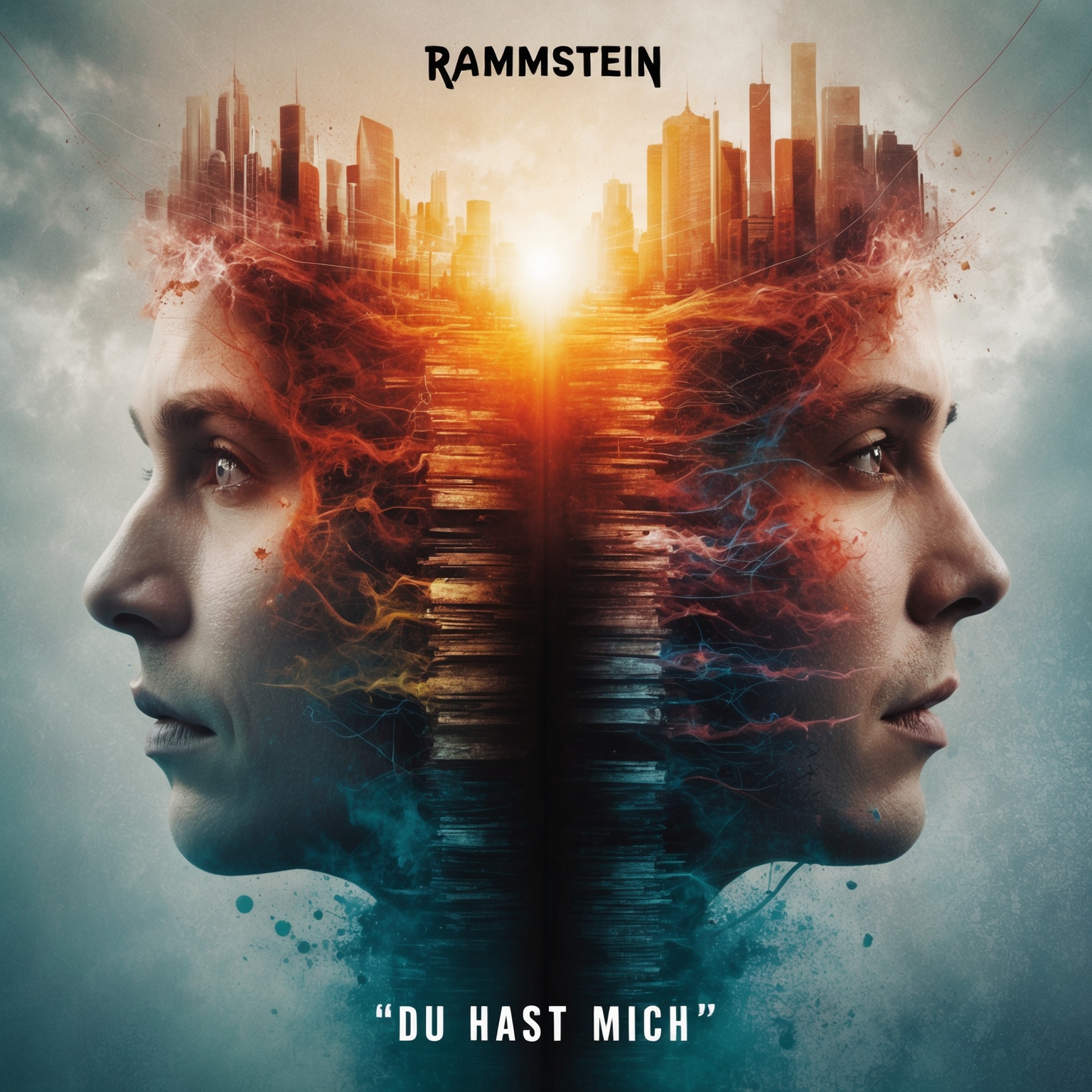
Rammstein’s “Du Hast Mich” is a masterful blend of raw emotion and intricate wordplay. At first glance, the lyrics seem straightforward, but they are laden with multiple interpretations that resonate with audiences on different levels. The repetitive use of ‘Du hast mich,’ which translates to ‘You have me’ or ‘You hate me,’ plays on the phonetic similarities in German, creating a duality that is both intriguing and thought-provoking. This clever use of language not only adds depth to the lyrics but also allows listeners to engage with the song beyond its surface-level meaning.
The primary theme revolves around the complexities of commitment and trust, as the lyrics progress into a question of loyalty and fidelity, prompting the listener to consider the implications of these concepts. The lines ‘Willst du bis der Tod euch scheidet treu ihr sein für alle Tage…?’ which translates to ‘Do you want to be faithful to her until death separates you for all days…?’, suggest a narrative that is deeply personal, exploring the hesitations and doubts that often accompany long-term commitments. This narrative style, woven in the second person, invites the audience to project their thoughts and emotions onto the song, making it universally relatable.
Literary devices are prevalent throughout the song. Alliteration, repetition, and subtle wordplay enhance the lyrical quality, emphasizing the emotional weight of doubt and desire. These elements contribute to the song’s haunting atmosphere, compelling listeners to reflect on the fragility of promises and the unspoken uncertainties in relationships. The song’s lyrics deviate from typical romantic portrayals, opting instead to challenge the listener with a stark and honest exploration of human connections.
A distinguishing element of “Du Hast Mich” is its cultural and social resonance. Released during a time of significant political and social change in Germany, the song’s exploration of trust and loyalty can be seen as reflective of larger societal themes, capturing a generation’s ambivalence towards promises made by authoritative bodies. Thus, “Du Hast Mich” transcends its romantic veneer, serving as a commentary on the broader human experience of trust, resilience, and skepticism.
? Did you know Du Hast Mich by Rammstein played a part in The Matrix’s iconic vibe? ? A German tune that shook Hollywood! #Rammstein #DuHast #MatrixMoments https://bit.ly/41jrjfc
Click to Tweet

